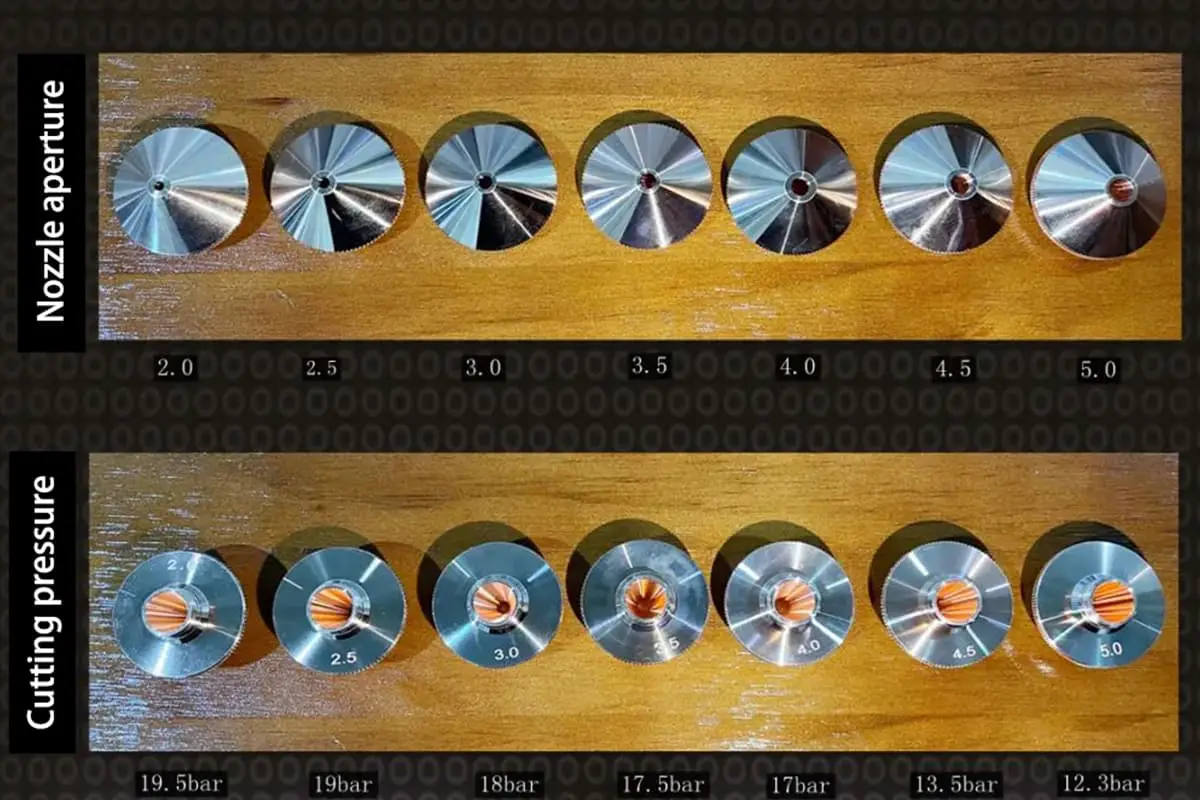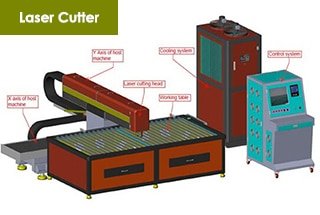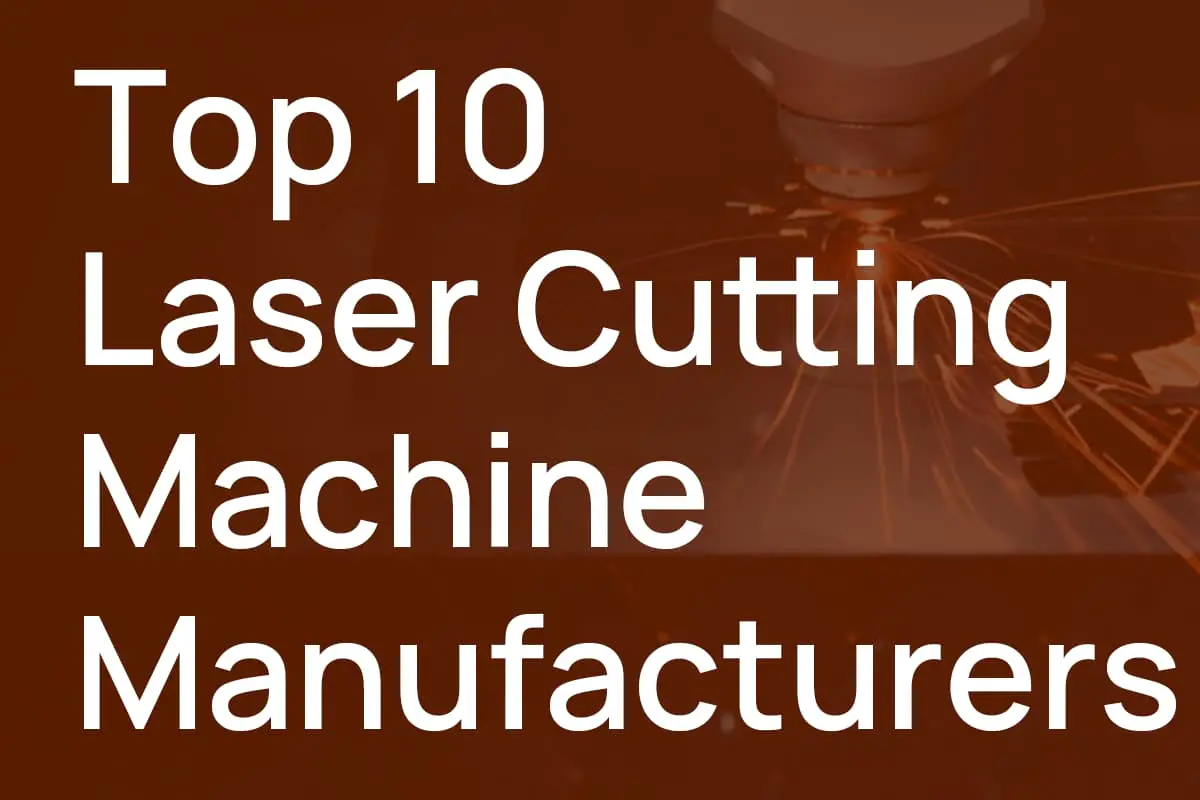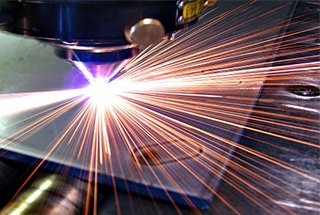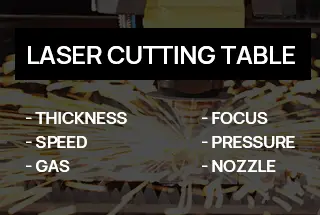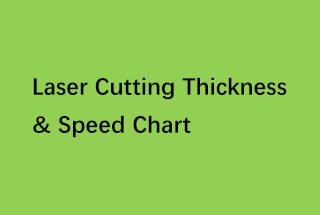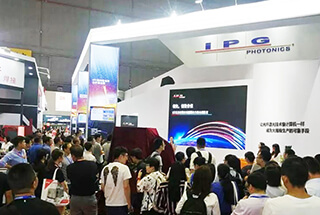
Imagine slashing your laser cutting costs while boosting efficiency with a simple change. This article explores how using air as an auxiliary gas in laser cutting can achieve just that. You’ll learn the benefits of air over traditional gases like nitrogen and oxygen, and understand how this method can enhance your cutting process. Discover how this cost-effective alternative can transform your operations, reduce expenses, and maintain high-quality cuts. Dive in to see how air can be a game-changer in your manufacturing workflow.
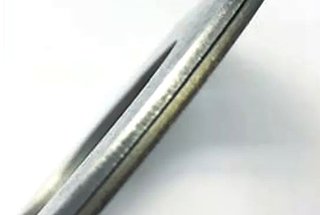
Laser cutting, a transformative technology introduced in the 1960s, has become an integral part of various industries due to its unparalleled precision and efficiency in material processing. This advanced cutting method has significantly streamlined production processes across multiple sectors.
However, the widespread adoption of laser cutting technology has intensified market competition, leading to price pressures and reduced profit margins for equipment manufacturers and service providers. To maintain competitiveness, companies must focus on optimizing their production processes and enhancing overall operational efficiency.
One effective strategy to achieve cost reduction in laser cutting operations is the utilization of air as an assist gas. This approach offers several advantages over traditional assist gases like nitrogen or oxygen:
To implement air-assisted laser cutting effectively, consider the following best practices:
While air-assisted cutting may not be suitable for all applications, particularly those requiring oxide-free cuts or cutting highly reflective materials, it can significantly reduce operational costs for a wide range of cutting tasks.
Implementing air-assisted laser cutting should be part of a comprehensive strategy to enhance production processes, improve efficiency, and focus on value-added activities. This approach, combined with ongoing investments in research and development, can help companies maintain a competitive edge in the evolving laser cutting market.
First, let’s examine the process of laser cutting:
The laser generated by the laser generator is focused through a lens and converges to form a small, intense light spot. The distance between the lens and the plate is carefully controlled to ensure the stability of the laser spot in the direction of the material’s thickness.
At this point, the lens focuses the light into a spot with a high power density, typically reaching 106-109W/cm2. The material absorbs the energy from the light spot, causing it to instantly melt, and the molten material is then removed by a stream of auxiliary gas, completing the cutting process.
Throughout the entire cutting process, the auxiliary gas serves two main purposes: to provide the necessary force for cutting and to remove the molten material from the workpiece.
In this process, different types of gases have different effects on materials and sections:
Oxygen, as an auxiliary gas in laser cutting, serves a dual purpose: it expedites the removal of molten metal and catalyzes an exothermic oxidation reaction. This synergistic effect significantly enhances the laser’s cutting capacity, particularly for thicker materials. The oxidation reaction generates additional heat, effectively increasing the energy density at the cutting zone and improving overall process efficiency.
However, the use of oxygen comes with trade-offs. The cutting surface undergoes considerable oxidation, which may necessitate post-processing for applications requiring pristine surfaces. Interestingly, the rapid cooling induced by the oxygen jet creates a localized heat-affected zone (HAZ) with increased hardness. This metallurgical change can be advantageous for certain subsequent processes, potentially reducing the need for additional heat treatment steps.
(2) Nitrogen
Nitrogen, an inert gas, creates a protective atmosphere during laser cutting, effectively shielding the molten metal from oxidation. This results in high-quality, oxide-free cut surfaces, which is crucial for materials sensitive to oxidation or applications demanding superior surface finish. However, unlike oxygen, nitrogen lacks the ability to contribute additional thermal energy through exothermic reactions, limiting its cutting capacity compared to oxygen, especially for thicker materials.
The use of nitrogen as an auxiliary gas typically requires higher flow rates to achieve effective shielding and molten metal ejection. This increased consumption, coupled with the higher cost of nitrogen compared to air or oxygen, results in elevated operational expenses. However, these costs must be weighed against the benefits of improved cut quality and reduced post-processing requirements for many applications.
(3) Air
Air, a readily available and cost-effective option, offers a balanced approach to laser cutting. Its composition of approximately 78% nitrogen and 21% oxygen provides a unique combination of partial oxidation and partial shielding. This results in moderate oxidation at the cutting edge, while the predominant nitrogen content mitigates excessive oxidation and contributes to heat transfer through convection.
The cutting performance with air lies between that of pure oxygen and pure nitrogen. While it may not match the cutting speed of oxygen for thick materials or the surface quality achieved with nitrogen, air offers a versatile and economical solution for a wide range of applications. The primary costs associated with using air are the power consumption of the air compressor and the maintenance of the air filtration system, which are generally lower than the expenses incurred with pure gas systems.
The choice between these auxiliary gases depends on factors such as material type, thickness, desired cut quality, and economic considerations. Modern laser cutting systems often allow for dynamic gas switching, enabling operators to optimize gas selection based on specific job requirements.
FIG. 1 illustrates the cutting section effect of 1.5mm thick 304 stainless steel using nitrogen and air as the auxiliary gas. As seen in the figure, when nitrogen is used as the auxiliary gas, the section is shiny and bright, while when air is used, the section is pale yellow.
A comparison of the cutting costs of air and nitrogen as auxiliary gases for 1.5mm thick 304 stainless steel is presented in Table 1. The comparison uses the latest generation of fiber laser cutting machines equipped with self-developed fiber laser generators.
The cost analysis reveals that using air as the auxiliary gas results in a 23.7% decrease in cutting costs per hour compared to using nitrogen. This reduction in cutting costs can have a significant impact in reducing the overall processing costs for the factory.
Furthermore, the power consumption of the air compressor is analyzed as follows:
Many enterprises currently use non-variable screw air compressors. If a permanent magnet frequency screw air compressor is used, it can result in a savings of up to 50% in electricity for the air compressor alone.
When air is used as the auxiliary gas, the cutting cost is 36.2% lower than when using nitrogen.
Table 1 Cutting cost comparison
| Item | SUS304-1.5 | SUS304-1.5 |
|---|---|---|
| Processing Speed (mm/min) | 35000 | 35000 |
| Auxiliary Gas | Air | Nitrogen |
| Air Pressure (Mpa) | 0.8 | 0.8 |
| Auxiliary Gas Flow (NL/min) | 296.7 | 296.7 |
| Processing Time Per Meter (sec) | 1.7 | 1.7 |
| Electricity Cost (Yuan/Hr) | 14.675 | 14.675 |
| Air Compressor Electricity Cost (Yuan/Hr) | 12.25 | 5.25 |
| Auxiliary Gas Cost (Yuan/Hr) | 0 | 15.347 |
| Subtotal (Yuan/Hr) | 26.925 | 35.272 |
| Electricity Cost (Yuan/m) | 0.012 | 0.012 |
| Air Compressor Electricity Cost (Yuan/m) | 0.006 | 0.002 |
| Auxiliary Gas Cost (Yuan/m) | 0 | 0.015 |
| Total (Yuan/m) | 0.018 | 0.029 |
Note:
(1) The cost analysis mentioned above was calculated with the following assumptions:
(2) The power consumption of the air compressor when cutting with air was calculated for a non-variable screw air compressor with a capacity of 17.5kW, pressure of 1.26MPa, and flow rate of 2.3m3/min.
(3) When nitrogen is used as the auxiliary gas for cutting, the air compressor still needs to supply gas to the machine, which results in electricity costs.

(a) The cutting section when nitrogen as the auxiliary gas
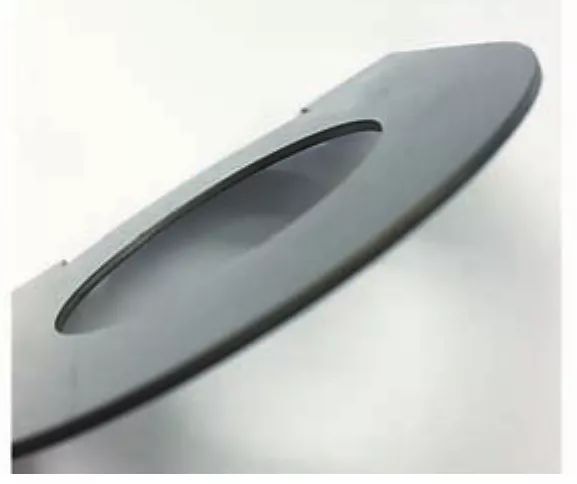
(b) The cutting section when air as the auxiliary gas

(c) Section comparison of two parts (nitrogen on the left and air on the right)
Fig.1 Cutting section effect when using nitrogen and air as the auxiliary gas
When the plate thickness exceeds 1.5mm, a certain amount of burr will be generated on the cutting section. However, the burrs are not sharp enough to scratch paper.
The maximum thickness that can be cut with air as the auxiliary gas varies depending on the power and type of laser generator.
The cutting section produces a yellow oxide layer.
The cutting burr will be reduced compared to using nitrogen as the auxiliary gas.
Table 2 displays the cutting range when air is used as the auxiliary gas for both carbon dioxide laser cutting machines and fiber laser cutting machines.
Table 2 The maximum thickness of the plate is cut when the air is used as an auxiliary gas
| Materials | Gas | 4KW CO2 Laser Cutter | 4KW Fiber Laser Cutter |
|---|---|---|---|
| Q235 steel plate | Air | 3mm | 3mm |
| Oxygen | 20mm | 22mm | |
| SUS304 steel plate | Air | 3mm | 3mm |
| Nitrogen | 12mm | 18mm | |
| A1050 aluminum plate | Air | 6mm | 2mm |
| Nitrogen | 6mm | 8mm | |
| A5052 aluminum alloy plate | Air | 6mm | 2mm |
| Nitrogen | 10mm | 16mm |
(1) For carbon steel plate
When air is utilized as the auxiliary gas during laser cutting of carbon steel, it produces cut sections with minimal burrs. These burrs are typically less sharp and more manageable compared to those produced by other gases. This outcome is particularly advantageous for components with moderate burr tolerance requirements. The oxidation reaction between the air and the molten steel creates a thin oxide layer that can actually assist in the ejection of molten material, resulting in cleaner cuts.
(2) For stainless steel plate
Employing air as the auxiliary gas in cutting stainless steel plates induces oxidation, which can lead to several challenges. The cut edges may develop defects such as slag formation and porosity (stoma) in the prospective welding zone. These imperfections can significantly compromise the integrity of subsequent welding operations, potentially reducing the strength and quality of the welded joint.
To mitigate these issues, it’s crucial to implement a post-cutting surface preparation process. This typically involves mechanically removing the oxide layer from the cut edges through careful grinding or polishing. This step is essential to restore the surface to a condition suitable for high-quality welding, ensuring optimal joint strength and performance.
Furthermore, the cut section will develop a characteristic yellow-brown oxide layer. This discoloration can be problematic for externally visible parts where aesthetics are important. The oxide layer also interferes with welding processes by introducing impurities and altering the material’s surface properties. Therefore, it’s imperative to remove this layer through polishing or chemical treatment prior to any welding operations to ensure proper fusion and joint integrity.
(3) For aluminum plate and aluminum alloy plate
In the case of aluminum and aluminum alloy plates, using air as the auxiliary gas during cutting offers a distinct advantage in terms of burr reduction. The oxidation process that occurs with air assists in managing the molten metal flow, resulting in smaller, more controlled burrs along the cut edges. This is in contrast to using nitrogen as the auxiliary gas, which, while providing a clean cut, tends to produce larger burrs due to the absence of the oxidation effect.
The choice between air and nitrogen for aluminum cutting often depends on the specific alloy composition, plate thickness, and the intended application of the cut parts. For applications where minimal post-processing is desired and slight oxidation is acceptable, air can be the preferred choice. However, for high-precision components or where a completely oxide-free surface is required, nitrogen might still be favored despite the larger burrs, as these can be more easily removed in subsequent finishing operations.
When utilizing air as the auxiliary gas in metal fabrication processes, a consistent pressure of 0.9MPa is essential. To meet this requirement, it is recommended to employ a screw-type air compressor with a rated working pressure of 1.26MPa and a flow rate of 2.3m³/min. This specification ensures adequate pressure and volume for optimal performance.
Air quality is crucial for precision cutting and welding applications. The compressed air should achieve a drying rate of 99% with moisture content below 1/100. To maintain this high standard, implement a multi-stage filtration system in the compressed air pipeline, incorporating high-efficiency particulate air (HEPA) filters and coalescing filters. Regular maintenance and replacement of these filter elements are critical to sustaining air quality over time.
For effective moisture removal, two primary dryer options are available: regenerative adsorption dryers and refrigerated dryers. While both have merits, regenerative adsorption dryers are preferred for their superior stability, lower maintenance requirements, and longer operational lifespan. These systems utilize desiccant materials to remove moisture, offering consistent performance even under varying ambient conditions.
When designing the compressed air distribution system, careful consideration must be given to the pipeline diameter and pressure reducer selection. These components should be sized based on the compressor’s flow rate and pressure output to minimize pressure drop and ensure stable air delivery at the point of use. Implementing a loop system with properly sized headers and drop legs can further enhance pressure stability and system efficiency.
To optimize energy consumption, consider investing in a permanent magnet variable frequency drive (VFD) screw air compressor. These advanced systems can reduce electricity usage by up to 50% compared to fixed-speed alternatives. The VFD technology allows the compressor to adjust its output based on demand, resulting in significant energy savings during periods of lower air consumption.
Additionally, implementing a comprehensive air management system can further enhance efficiency by monitoring air usage patterns, detecting leaks, and optimizing compressor operation. Regular audits of the compressed air system can identify opportunities for improvement in both performance and energy efficiency.
In today’s highly competitive industrial landscape, companies can gain a significant edge by optimizing their production processes, elevating product design sophistication, and implementing innovative manufacturing strategies.
A particularly effective approach to achieving a competitive advantage lies in reducing processing costs within existing workflows. This can be accomplished through the adoption of advanced technologies and smart process optimization.
One such cost-effective solution is the utilization of air as an auxiliary gas in cutting operations, particularly for certain materials and thicknesses. This approach can substantially reduce cutting costs, especially when compared to traditional methods using nitrogen or oxygen. The benefits extend beyond mere cost savings:
By implementing air-assisted cutting where appropriate, companies can not only increase their profit margins but also allocate resources more effectively towards other critical areas of business development. This strategic shift in resource allocation can provide vital support for broader transformation and upgrading initiatives, enabling businesses to stay competitive in an ever-evolving industrial landscape.
It’s important to note, however, that the suitability of air as an auxiliary gas depends on factors such as material type, thickness, and required cut quality. Companies should conduct thorough cost-benefit analyses and quality assessments before implementing this technology in their production lines.
As industries continue to evolve, embracing such cost-effective and efficient technologies will be crucial for companies aiming to maintain a competitive edge while pursuing sustainable growth and innovation.

